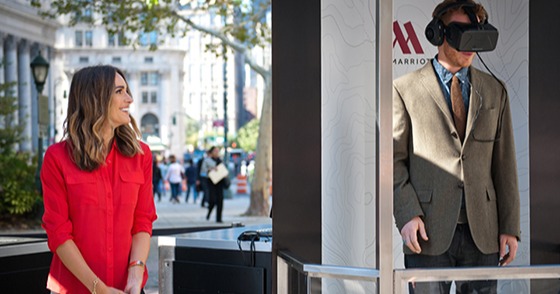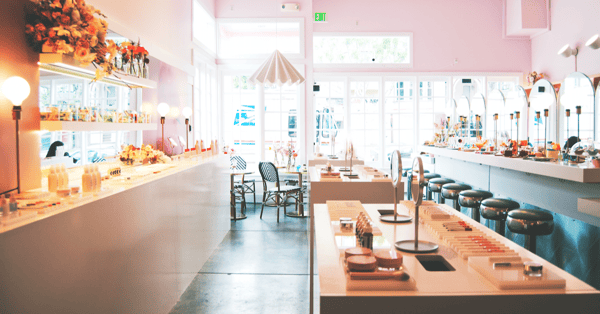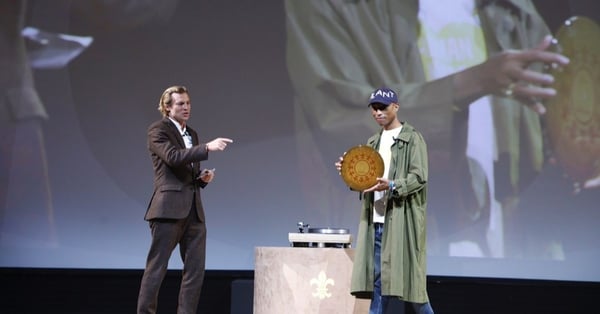The world has moved on from luxury brands simply having a strong heritage and advertising their products traditionally. Brands need to create something special to cut through all of that digital noise.
From Glossier to Marriott, this is how luxury brands use experiences to stay relevant (and how you should too).
Experience Luxury Brands in an Unforgettable Way
In a brick and mortar location, luxury consumers expect a pampered shopping experience. These affluent buyers visit boutique locations to experience high-level service and engage with superior products.
The experience is and has always been a big part of a luxury purchase. It goes well beyond a transaction.
Glossier, also known as “the Millennials’ Estee Lauder,” teamed up with the famous Rhea’s Café to host its first pop-up makeup store in San Francisco. The entire café was remodelled to welcome the beauty line with a fresh coat of pastel pink paint and new furniture additions to appeal to Glossier’s youthful audience.
In sum, this beauty giant created an unexpected experience that embraced and blended in effortlessly with its surroundings, much like the brand's products do on the skin.
Looking at a website doesn’t give the potential buyer a true experience of the brand’s luxury. And it doesn’t exactly look good on Instagram, does it? This is why the experience is so important for luxury brands.
Helps Brands Stay Connected With Consumers
One of the largest challenges facing luxury brands is that high-end consumer preferences are shifting. Social posts alone just don’t cut it for engagement anymore.
Many are inviting digital consumers to experience their brand directly in a white-glove way. Luxury spirits brand LOUIS XIII Cognac’s previous activation is a great example of how brands can benefit from hearing their customer’s concerns. They created the campaign “100 Years: The Song We’ll Only Hear If We Care,” championing the need to combat climate change. It also highlighted the century-long process that goes into its upscale brandy.
When looking to engage meaningfully, brands can’t be afraid to be radical with their creative ideas. At the same time, they need to understand what their consumers want, continuing their brand’s narrative in the process.
It’s not just a marketing message being flashed up on your browser but instead, a two-way conversation - something the consumer can see, hear, touch and feel. It allows them to really understand a brand and its values.
It’s memorable. It’s enjoyable. It’s Instagrammable. It also helps a brand to forge stronger relationships with prospective and existing customers.
Technology Is Revolutionising the Way Consumers See Brands
Luxury brands are continuously challenged to convey what makes them so affluent. Not just buzzwords, you can use AR or VR to combine digital elements with brands as we know them. This technology now lets brands bring experiences to life and create campaigns at scale.
Borrowing from modern technology, other high-end brands now host a range of VR experiences as a way to offer an immersive glimpse into their brand narratives. Most consumers see campaigns that make use of VR as interesting and progressive. Here are some luxury brands already utilising VR to stay ahead of the competition:
- With such a strong visual representation of their brand, Jeep was keen to continue its robust brand awareness. Kitted out with an Oculus Rift, members of the public could virtually test drive the new vehicle, offering a full customer experience without the need for the car itself.
- Marriott capitalised on the “what ifs” of vacationers, inviting curious passersby to use VR to teleport them to sandy beaches or the city. This destination sampling inspires you to take a trip but also makes you think about the new technology that can create such experiences. This reinforces that Marriott hotels are innovative.
- Chicago bar Baptiste & Bottle created a multi-sensory cocktail experience that combined VR with IRL. Customers of its opulent whiskey-based cocktail had a headset placed on their head, immersing them into a Scottish forest landscape. It featured scenery depicting the origins of the Macallan whiskey used to create the cocktail.
- Samsung, in collaboration with NASA, created an immersive 4D lunar gravity VR experience. Users stepped into a flight suit and harness while wearing a Gear VR headset to experience something truly unique. They immersed themselves in a visual and physical experience that recreated a moon mission.
Although this is how luxury brands have used experiential marketing to stay relevant, there’s no reason you can’t take inspiration from these industry leaders. It’s easier than you think to create a successful experiential marketing campaign that resonates with your audience.
Download Our Playbook To Keep Your Marketing Relevant
These are just some luxury brands remaining significant through harnessing experiential marketing.
For a more detailed look at experiential marketing and why your brand is missing out, download our playbook now. All this knowledge is free and it could mean huge growth opportunities for your business. Click below to get your copy.




